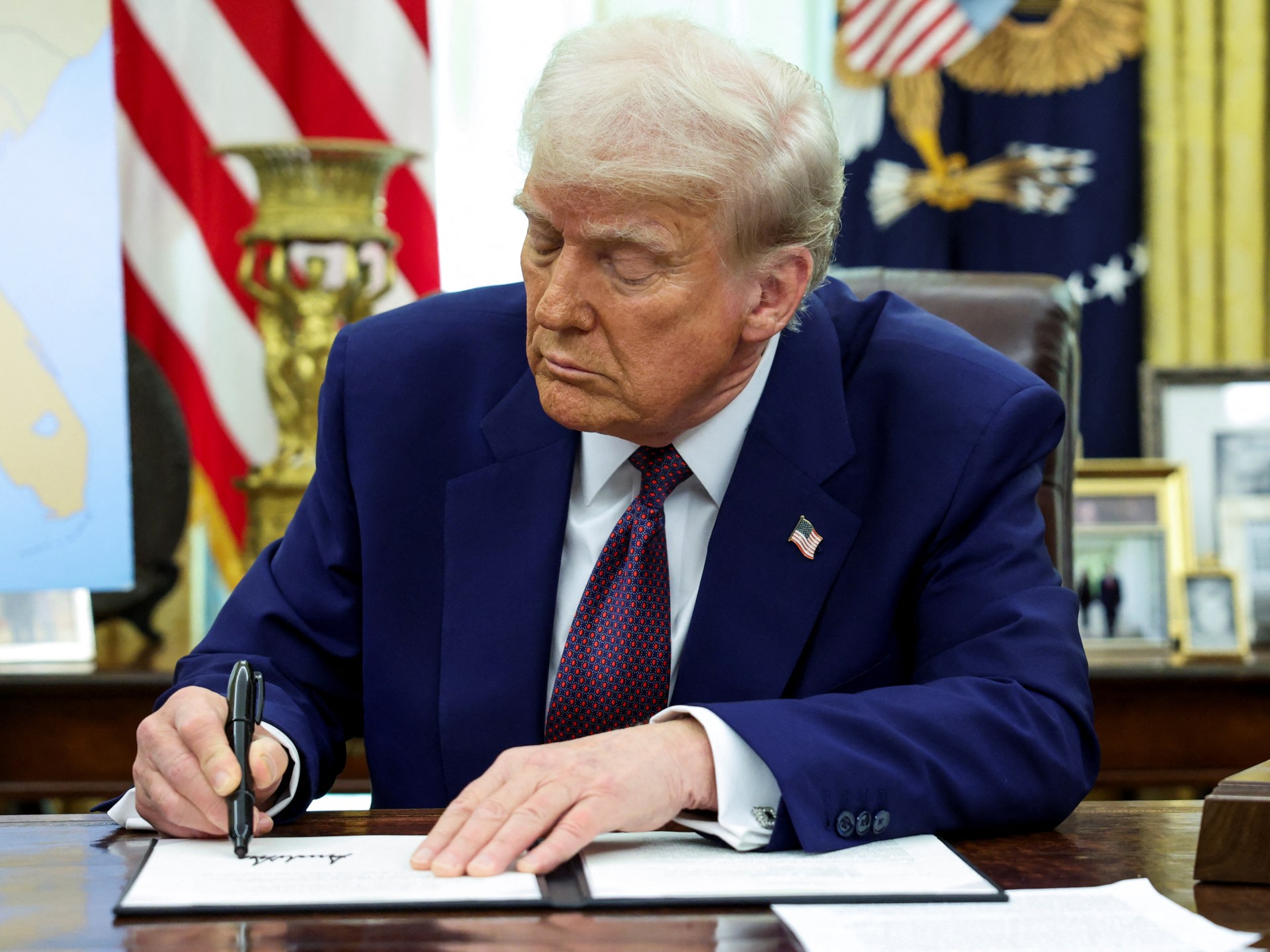Over the weekend, United States President Donald Trump promised Americans $2,000 each from the “trillions of dollars” in tariff revenue he said his administration has collected.
During his second term, Trump has imposed tariffs broadly on countries and on specific goods such as drugs, steel and cars.
“People that are against Tariffs are FOOLS!” Trump said in a November 9 Truth Social post. “We are taking in Trillions of Dollars and will soon begin paying down our ENORMOUS DEBT, $37 Trillion. Record Investment in the USA, plants and factories going up all over the place. A dividend of at least $2000 a person (not including high income people!) will be paid to everyone.”
How seriously should people take his pledge? Experts urged caution.
Tariffs are projected to generate well below “trillions” a year, making it harder to pay each person $2,000. And the administration already said it would use the tariff revenue to either pay for existing tax cuts or to reduce the federal debt.
Trump’s post came days after the US Supreme Court heard arguments about the legality of his tariff policy. The justices are weighing whether Trump has the power to unilaterally impose tariffs under the International Emergency Economic Powers Act. If the justices rule against Trump, much of the expected future tariff revenue would not materialise.
What Trump proposed, and who would qualify
The administration has published no plans for the tariff dividends, and in a November 9 ABC News interview, Treasury Secretary Scott Bessent said he had not spoken to Trump about giving Americans a dividend payment.
Details about a potential payment have been limited to Truth Social posts.
Trump said “everyone”, excluding “high income people”, would get the money, but did not explain the criteria for high-income people. He also did not say whether children would receive the payment.
In a November 10 Truth Social post, Trump said his administration would first pay $2,000 to “low and middle income USA Citizens” and then use the remaining tariff revenues to “substantially pay down national debt”.
Trump has not said what form the payments might take. Bessent said the dividend “could come in lots of forms, in lots of ways. You know, it could be just the tax decreases that we are seeing on the president’s agenda. You know, no tax on tips, no tax on overtime, no tax on Social Security, deductibility of auto loans. So, you know, those are substantial deductions.”
Analysts said it is a stretch to rebrand an already promised tax cut as a new dividend.
Trump has previously discussed paying Americans with tariff revenue.
“We have so much money coming in, we’re thinking about a little rebate, but the big thing we want to do is pay down debt,” he told reporters on July 25. “We’re thinking about a rebate.”
Days later, Senator Josh Hawley introduced legislation that would give $600 tariff rebate cheques to each American adult and child. Hawley’s bill has not advanced.
Tariff revenue collected versus cost of ‘dividend’ payment
Trump made the imposition of tariffs one of his signature campaign promises for the 2024 presidential election. Since taking office in January, he has enacted tariffs on a scale not seen in the US in almost a century; the current overall average tariff rate is 18 percent, the highest since 1934, according to Yale Budget Lab.
Through the end of October, the federal government collected $309.2bn in tariff revenue, compared with $165.4bn through the same point in 2024, an increase of $143.8bn.
The centre-right Tax Foundation projects that tariff revenue will continue to increase to more than $200bn a year if the tariffs remain in place.
Erica York, the Tax Foundation’s vice president of federal tax policy, estimated in a November 9 X post that a $2,000 tariff dividend for each person earning less than $100,000 would equal 150 million adult recipients. That would cost nearly $300bn, York calculated, or more if children qualified. That is more than the tariffs have raised so far, she said.
The Committee for a Responsible Federal Budget projected that Trump’s proposal could cost $600bn, depending on how it is structured.
The administration previously detailed other uses for tariff revenue
The Trump administration already promised to use tariff revenue for other purposes, including reducing the country’s deficit and offsetting the cost of the GOP tax and spending bill Trump signed into law in July.
As Trump announced new tariffs on April 2, he said he would “use trillions and trillions of dollars to reduce our taxes and pay down our national debt”.
Bessent has made the same promise, falsely saying in July that tariffs were “going to pay off our deficit”.
The treasury secretary said in August that he and Trump were “laser-focused on paying down the debt”.
“I think we’re going to bring down the deficit-to-GDP,” Bessent said in an August 19 CNBC interview. “We’ll start paying down debt and then, at a point, that can be used as an offset to the American people.”
Tariffs’ current cost to Americans
Tariffs are already costing Americans money, analysts say. Independent estimates range from about $1,600 to $2,600 a year per household. Given the similarity of these amounts to Trump’s proposed dividend, York said it would be more efficient to remove the tariffs.
Joseph Rosenberg, Urban Institute-Brookings Institution Tax Policy Centre senior fellow, said a $2,000 dividend in the form of a cheque would require congressional approval – and lawmakers have already declined to act on that idea once.
Source: Aljazeera

Leave a Reply